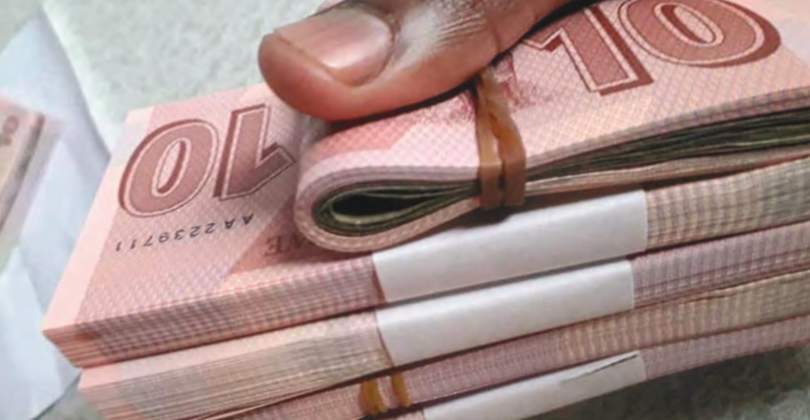‘Blended inflation blurring actual Zim dollar inflation’
THE blended inflation gauging model, which the Zimbabwe National Statistics Agency (ZimStat) now uses to track inflation in the domestic market, may be distorting the actual Zimbabwe dollar price inflation trend, captains of industry say.
This comes after recent surges in the inflation rate, measured using the blended inflation model, amid strong indications that this reflected the movement and weight of sharply rising Zimbabwe dollar prices.The Reserve Bank of Zimbabwe (RBZ), in its 2023 monetary policy statement delivered in early February 2023, urged economic agents to use blended inflation to measure inflation developments in the economy.
The central bank argued that blended inflation reflected more accurately the dynamics and situation in the economy, where the bulk of transactions are now being executed in US dollars.
Studies revealed that at least 76 percent of transactions in the Zimbabwe economy are now being conducted in hard currency, as businesses and individuals shun the volatile local currency.
Industry had previously voiced its concern over ZimStat’s decision to use blended inflation to measure inflation, and there was need to publish separate US dollar and Zimbabwe dollar inflation figures, to make planning easier for expenditure in each of the respective currencies.While captains of industry used March 2023 inflation figures in their study, latest inflation figures also seem to lend credence to their fears, after annualised inflation retreated by 12,4 percentage points to 75,2 percent, but inflation surged, month on month.On a monthly basis, monthly inflation increased by 2,4 percent in April, 2023, the most in six months, having declined by 0,1 percent in the prior month.The Confederation of Zimbabwe Industries (CZI) said in recent study report that according to an unofficial model the lobby group used to estimate inflation, annual inflation was on average about 17,6 percentage points lower than the Total Consumption Line (TCL) inflation, or about 89,8 percent of the actual value of the TCL inflation.
Based on the TCL inflation level of 206,7 percent for March 2023, the industrial lobby estimated actual Zimbabwe dollar inflation for Zimbabwe in March could have been anywhere between 185 percent and 189 percent. CZI contends that using blended inflation, computed as an average of price dynamics in both US and Zimbabwe dollar currencies, presented distorted pictures as it did not denote any lived experience for any particular individual, institution or entity.
According to the Zimbabwe National Statistics Agency (ZimStat), month-on-month inflation rate in March 2023 was 0,1 percent, gaining only 1,7 percent on the February 2023 rate of minus 1,6 percent.
This implies that prices as measured by all items Consumer Price Index (CPI) increased by an average of 0,1 percent from February 2023 to March 2023.
During the same period, annual inflation March 2023 as measured by the all-items Consumer Price Index (CPI) was 87,6 percent, meaning prices surged by the same rate over the last 12 months.
Confederation of Zimbabwe Industries (CZI), a lobby representing over 1 200 companies, said businesses were desperately looking for estimates of actual inflation rates of the currency in use, which they have been currently denied by the authorities.
CZI said there were some key decisions that called for the use of inflation for which the blended rate is proving to be inadequate. The industrial lobby said one of the most accurate ways of estimating the Zimbabwe dollar inflation was to use the changes in the Total Consumption Line (TCL) for Zimbabwe, which is measured in local currency dollars.
“Generally, the same basket of products is being used to measure food poverty lines consistently. Whilst these do not represent the whole basket measured by inflation, they at least help indicate the direction at which the general prices have been increasing,” CZI said.
A look at the trends since November 2021 shows that the Total Consumption Line (TCL) inflation and the annual inflation are closely related. Specifically, annual inflation was on average about 17,6 percentage points lower than the TCL inflation, or about 89,8 percent of the actual value of the TCL inflation. “Based on the TCL inflation level of 206,7 percent for March 2023, the actual Zimbabwe dollar inflation for Zimbabwe in March could have been anywhere between 185 percent and 189 percent.
“This means that controlling the Zimbabwe dollar inflation is still a battle far from won by the authorities,” CZI noted.
After appearing to continue on a sustained decline, following a cocktail of policy interventions that included a hike in the bank policy rate from 80 to 200 percent, inflation is once again threatening resurgence amid, once again, due to the increased pace of local currency depreciation.
The exchange rate premium decreased from 45 percent in January 2023 to 42 percent in February 2023. The parallel market rate was stable during this period while the official rate was steadily increasing, and the rates were moving towards convergence.
“However, in March 2023 the parallel market rate started to depreciate faster, resulting in the exchange rate premium increasing to about 61 percent at the end of the month. Given
that formal sector players are allowed a margin of 10 percent over the official exchange rate, the parallel market premium at the end of March was about 47 percent,” CZI said.-ebusinessweekly











